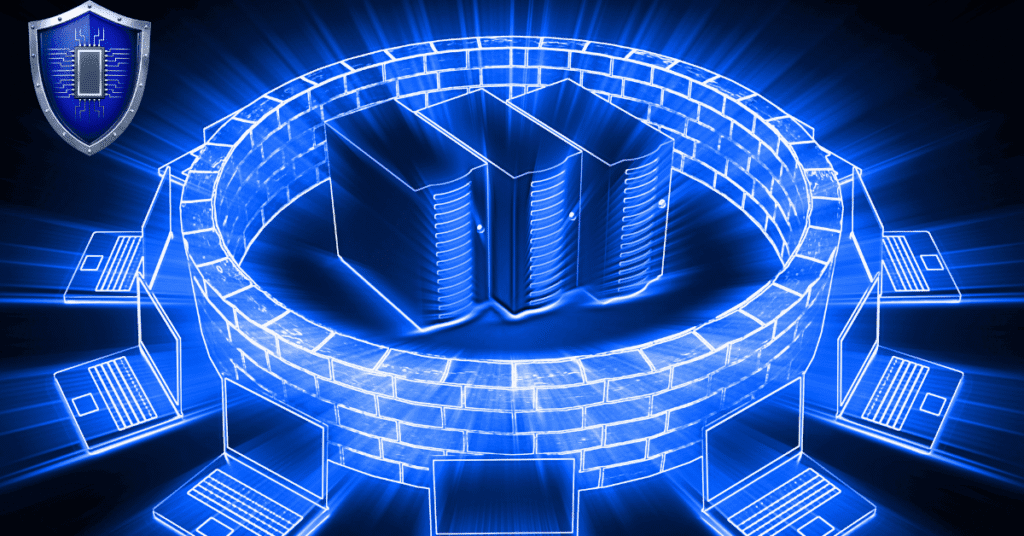Introduction
The importance of cybersecurity has become apparent over time. Everybody knows that a firewall is part and parcel of any security measure; it had best be understood how firewalls operate, be it on enterprise-level IT working or even while casually using the Internet. This exhaustive guide explains the operations of firewalls, how they defend the system, and why firewalling serves as one major pillar of network security, even in the year 2025.
What Is a Firewall?
A Firewall is a network security hardware device or network security software that observes and modifies the incoming and outgoing traffic on a network according to predefined security rules. What is the most important role of a firewall? Well, to create a boundary wall between a secure internal network and untrusted external networks, like the Internet.
In this way, they stop unauthorized access, cyber-attacks, and the diffusion of malware into the networks, and therefore very important part of their importance for network protection.
A History of Firewalls
The idea of a firewall emerged in the late 1980s with the rise of the internet. The first firewalls were simple packet filtering. They have now evolved into very sophisticated tools that perform very deep packet inspection, stateful inspection, and filtering at the application level.
There are three generations of the history of firewalls:
- First Generation: Packet-filtering firewalls (1988-1990s).
- Second Generation: Stateful inspection firewalls (mid-1990s).
- Third Generation: Application layer firewalls and next-generation firewalls (2000s-present).
Why Firewalls Matter
Cyber threats today are more sophisticated than ever and occur many times at shorter intervals.
Firewalls are very instrumental in:
- Preventing unauthorized access into internal systems.
- Prevent sensitive data from leaking out.
- Reduce exposure to malware and ransomware.
- Help maintain user privacy.
- Enforce company policies on Internet usage.
- Without a firewall, they expose networks to phishing, DDoS attacks, unauthorized data access, or simply being played by hackers.
How Firewalls Work
A firewall works by setting rules that filter certain data packets. The packets contain the following information:
- Source IP address
- Destination IP address
- Port number
- What type of protocol is being used (TCP, UDP)
- Based on a given rule, a particular traffic either gets accepted or blocked from reaching its destination. So, for example, those could be blocking all kinds of traffic from an IP that looks suspicious or restricting employees from going into social networks.
Types of Firewalls
There are different firewalls for different use cases:
a) Packet-Filtering Firewall
Filters packets through headers like IP address, port, and protocol. It is the most basic one and provides minimal security.
b) Stateful Inspection Firewall
Monitors the current state of active connections and makes decisions based on that. More secure than packet-filtering firewalls.
c) Proxy Firewall (Application-Level Gateway)
Works between client and server. Deep inspection at the application layer.
d) Next-Generation Firewall (NGFW)
Combines traditional firewall functionality with some advanced applications:
- Intrusion prevention
- Application Awareness
- SSL inspection
- Malware protection
e) Cloud-Based Firewall
This is the firewall that is hosted example, great for companies with hybrid or remote work environments.
Hardware vs. Software Firewalls
Hardware Firewall
A physical device is placed between your network and the gateway. It protects all devices on the network.
Pros:
- Dedicated resources
- No performance impact on endpoints
Cons:
- Costly
- Complexity to configure
Software Firewall
This installs on individual devices (usually on computers or servers).
Pros:
- Cheaper
- Easier to update
Cons:
- System resource consumption
- Needs management on each device
Tip: Most enterprises use a combination of both so that they can have a layered solution against attacks.
Firewall Placement Methods
There are several ways to place firewalls based on your network’s size and structure.
- Perimeter Firewall: At the border joining internal networks and external networks.
- Internal Firewall: For selective protection within a network, it limits specific departments or servers.
- DMZ (Demilitarized Zone): A public-facing server is isolated from internal networks.
- Cloud Firewall Deployment is ideal for SaaS, IaaS, and hybrid environments.
Main Features of a Modern Firewall
Modern firewalls are loaded with features to ensure that they cover the entire spectrum of protection:
- Intrusion Detection/Prevention (IDS/IPS)
- VPN support for remote access
- Antivirus and anti-malware integration
- URL filtering
- Traffic shaping and bandwidth control
- Logging and reporting tools
- Zero Trust support
- AI-powered threat detection
Examples of Common Firewall Rules
A firewall rule is a condition where traffic is allowed in or blocked out of a network. Some of the most common configurations are:
- Allow HTTP/HTTPS traffic
- Block incoming port 23 (Telnet) traffic
- Outbound FTP is restricted.
- Allow SSH access for IT Administrators.
- Block all known malicious IP ranges.
The configuration of firewall rules must involve good knowledge of networking to ensure service disruption isn’t caused or any possible vulnerabilities.
Advantages of Firewalls
- The money you invest in firewalls buys you extremely powerful advantages for individuals, businesses, and even governments:
- Enhanced Security Block unwanted traffic, prevent attacks, and protect against spyware or Trojans.
Regulatory Compliance Helps with standards compliance such as:
- GDPR
- HIPAA
- PCI-DSS
- ISO 27001
- Reduced Downtime Attacks that would cripple your operations would not happen, thus reducing overall downtime.
- Controlled Access Denies employee access to nonwork-related or malicious sites.
- Better Monitoring Help track anomalies, user behavior, and security events with more detailed logs.
Firewall Limitations
Firewalls have limitations alongside their advantages:
- They can’t stop the internal threats when wrongly configured.
- An effective solution should be combining firewall protection with antivirus, IDS/IPS, and employee cybersecurity training for a multi-layered defense strategy.
- Though firewalls have both merits and demerits, there are some possible disqualifications attached to their use.
- Improper configurations will not allow firewall protection from internal attacks.
- There is no protection against social engineering attacks such as phishing, for firewalls.
- Now becomes much more difficult for management.
- Mistakenly, firewalls deny innocent traffic at times.
- Antivirus programs or end-user detection tools cannot be substituted by firewalls.
Solution: Adopt a multilayered defense strategy, coupling firewall protection with antivirus programs, IDS/IPS safety nets, and awareness training for staff members.
Compliance Requests on Firewalls
Stormwaters play an important role in compliance with regulations in any industry in which sensitive data flows:
a) HIPAA-Healthcare
Supposed to protect electronic protected health information, or ePHI, with a firewall.
b) PCI-DSS-Payments
Takes care of guarding firewalls against unauthorized access to cardholder data.
c) GDPR-European Union
While not requiring firewalls, there should be some “appropriate technical and organizational measures” that will often include firewalls.
Incomplete firewalls can mean noncompliance, which automatically translates into fines and legal matters as well as reputational liability.
Best Practices in Firewall Management
Such best practices should be applied to a firewall for effective performance.
- Frequent auditing of firewall rules.
- Documenting every change in rulesets and configuration.
- Following the least-privilege principle for outgoing traffic.
- Turning on logs for every event triggered.
- Regularly update the firmware and software.
- Restricting administrative access with strong authentication.
- Testing firewall rules before deployment.
- Using automation tools for complex environments.
Gazing into Far Future: 2030 and Beyond
The future firewall is not something to just react to, but to have a proactive machine. Here are the technological avenues being envisioned:
AI-ML Integration
Firewalls learn patterns to predict and interrupt threats.
Zero Trust Firewall
A Firewall that is based on identity, assuming that by default no traffic is trusted.
Fully Cloud-Native Firewalls
Designed without a server, for Kubernetes, and multi-cloud platforms.
IoT Aware
Will support billions of connected devices.
Automation-Orchestration
Most AI-powered automation eliminates human errors for a better and faster response to threats.
Conclusion
Indeed, a firewall is something more than just a digital gatekeeper; it is the first layer of cybersecurity. Be it an individual protecting his data or a company protecting its customers’ sensitive information, a firewall would act as the first line of defense against cyber threats when set up correctly.
With the evolution of the nature of cyber threats into complex beings, the protections of passive firewall guards will turn into intelligent, predictive, and responsive security systems by 2025, and so on. Locking in your overall firewall choice, continually updating, and putting it into the broader picture of your cybersecurity strategy will most likely set the path to being ahead of threats.



